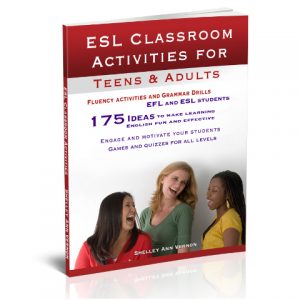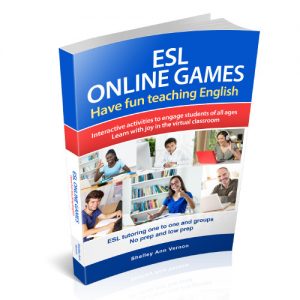Here is a prefixes and suffixes lesson plan I prepared for teaching one-to-one, but you may adapt it to a classroom.
Explanation of prefixes and suffixes
Prefixes go in front of a word. Suffixes go behind a word. Add them to a word or part of a word, and they will change the meaning of that word.
Prefixes and suffixes have meanings. For example, ‘n’ means not, while ‘pre’ means before, and ‘semi’ means half. Here is a list of common suffixes and their meanings. You might show this to your student for interest. Personally, I never studied prefixes or suffixes in this kind of detail, and I still became fluent in 3 languages. So, while I think this info is super interesting, there is no need to overwhelm your pupil with too much ‘science.’
To get started with your prefixes and suffixes lesson plan, I suggest giving your student(s) a list of the most common suffixes. Here is a list of the most common ones to print. Perhaps start with suffixes and do prefixes in the next lesson. Read it through and then ask your pupil to think of a noun, any noun, and see whether they can add a suffix to it that turns the word into a verb. Then try with the same nouns and see if you can make adjectives out of them or adverbs. HINT: Use the chart on the above link to help you.
Practise
Next, take a pile of words (write these on paper) and place them face down on the desk. You turn up the first card and try to make a word with a suffix. For example, ‘Dog’ – add the suffix ‘ed,’ and you get ‘dogged,’ an adjective meaning persistent – well done, you keep the card!
Now, it’s your student’s turn. Use a mixture of verbs, nouns, and adjectives such as these: carpet, clever, tie, basket, ski, intelligent, weather, computer, sock, play, picture, will, picnic, potato, good, bad, dream, cinema, film, light, duck, hour. Each of you has a turn making a new word using the root word plus adding a suffix. USE THE LIST of suffixes and the dictionary for help! You might not succeed with every word, but that’s not a problem!
Use this free online dictionary in class to quickly look up words and see what they mean or if they exist.
Suffix and prefix game
Try battleships. You have blank grids ready to use in the appendix to my teen and adult games book and the Online Games book.
Don’t forget you can let your student use the dictionary.
Fill in your battleship grid using words that have suffixes. I wouldn’t do prefixes as well since that would make rather a dense lesson for an intermediate. Stick to suffixes and do prefixes next time. This activity is substantial and makes for a challenging lesson. For homework, ask your student to learn all the new words by heart with all the possible suffixes. Give them a test at the next meeting.

More prefix and suffix lesson plan activities
In the next prefixes and suffixes lesson plan you can do prefixes, which are the same as suffixes except that the extra bit goes at the front.
Take the list of prefixes from the previous link, and ask your students to pick out a random word, such as ‘door.’ The teacher goes first since their turn can serve as a demonstration. First, try the word ‘door’ with various prefixes such as misdoor, subdoor, predoor, and undoor. There are no words here, so there are no points for you! Next, you pick a word for your student, like ‘dress.’ Your student adds the prefixes ‘mis, sub, pre, and un,’ and comes up with ‘undress,’ which scores a point!
Luck game
Next, play a game of luck using a pack of cards with words or pictures on them. Round one: you take the prefix ‘un,’ and your student takes a different prefix. Turn over a word or picture card, and both groups will see if either of you has a new word using the prefix. The person able to make a word takes that word or picture and keeps it as a point.
It’s a game of luck, so it doesn’t matter that your English is better. As soon as someone earns a point, swap prefixes and go through the cards again. It’s best if you have plenty of words or picture cards since you’ll go through them fast. You won’t be able to make a word most of the time, and that’s OK. This game is just a different way of working with prefixes, so your lesson isn’t exactly the same as the one on suffixes!
Prefixes and suffixes lesson plan resources
Get all my fun ideas in DOWNLOAD or paperback.
PAPERBACKS for the CLASSROOM and ONLINE teaching.
- Games
Games and Activities for Teens and Adults
Rated 5.00 out of 5€19.97Original price was: €19.97.€15.33Current price is: €15.33. Add to cart



6 thoughts on “Prefixes and suffixes lesson plan”
Thanks for sharing your extraordinary ideas about these grammar elements. Keep up the good work!
Thank you Maribel for your kind words and I’m glad you are enjoying my website. All the best, Shelley Ann Vernon.
Hi,
I’m having to explain the function of Noun suffixes. How would you explain it in a simple way not to confuse an ESL student?
Thanks!
Hello Justine, I found this video on You Tube that I think could help…https://www.youtube.com/watch?v=gloepoGkAEg
All the best,
Shelley
Yvonne Roith says “This looks fun! I like games like this and the one with prefixes is a twist to something I’ve done before. These types of “dry” grammar items work well with games, in my opinion.”
Unfortunately the BBC suffix link no longer works (at least for me) but I love this idea! Thanks!!